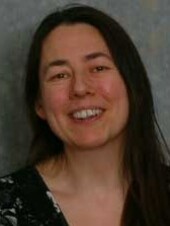Christine Done
|
 |
My research focuses on black holes, the ultimate triumph of gravity, with spacetime so warped that not even light can escape. They are most spectacularly seen where gas is captured - accreted - onto the black hole. The spiralling, infalling matter can convert some of its immense gravitational potential energy into high-energy X and gamma-ray emission before disappearing forever below the event horizon. This intense emission from the accretion flow transforms the darkest objects in the universe into the brightest, leading to their discovery from the first X-ray satellite observations at the dawn of the space age. These data transformed black holes from a speculative extrapolation of Einstein's gravity to mainstream observational science.
I specialize in understanding the physics of the accreting material, combining the best theoretical ideas with the best observational data. Much of this data has come from a series of Japanese-led satelllites - Ginga, ASCA, Suzaku and most recently the ill-fated Hitomi, whose breakthrough high resolution instrument will soon re-fly on XRISM. I was a Japanese member of the science team for Suzaku and Hitomi, and am now an ESA participating scientist on XRISM.
In my JSPS funded sabbatical year in Japan I started multiple collaborations on understanding winds and jets from the accretion flow. These are important as they provide a physical mechanism linking the accretion powered growth of the central black hole to the much larger scale of the star formation powered growth of the host galaxy. The goal is to develop physical and quantitative models for this feedback from Active Galactic Nuclei via jets and winds to incorporate into cosmological simulations of galaxy formation across cosmic time.
Back to Member List.






